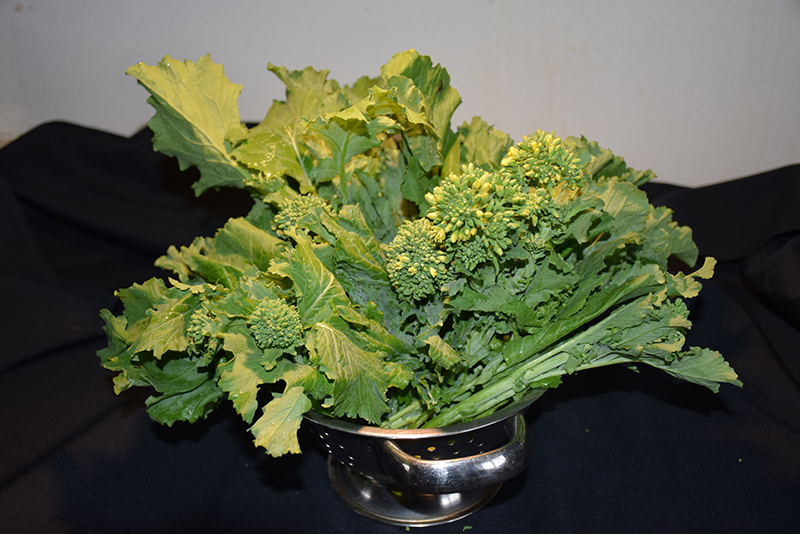Height: 22 inches
Spacing: 6 inches
Sunlight:
![]()
![]()
Hardiness Zone: (annual)
Other Names: Broccoli Raab, Spring Raab, Broccoletto
Description:
An early and prolific heirloom selection, excellent for home and market gardens, as well as growing in large containers; long and tender stems are topped with small clusters; slightly bitter and nutty, delicious when steamed, sauteed, or added to salads
Edible Qualities
Rapini is an annual vegetable plant that is commonly grown for its edible qualities. The entire above-ground parts of the plant are edible, and are usually harvested from mid spring to early fall. The edible parts have a bitter taste.
The plant is most often used in the following ways:
- Fresh Eating
- Eating When Cooked/Prepared
- Cooking
Planting & Growing
Rapini will grow to be about 22 inches tall at maturity, with a spread of 16 inches. When planted in rows, individual plants should be spaced approximately 6 inches apart. This fast-growing vegetable plant is an annual, which means that it will grow for one season in your garden and then die after producing a crop.
This plant is typically grown in a designated vegetable garden. It does best in full sun to partial shade. It does best in average to evenly moist conditions, but will not tolerate standing water. It may require supplemental watering during periods of drought or extended heat. It is not particular as to soil pH, but grows best in rich soils. It is somewhat tolerant of urban pollution. Consider applying a thick mulch around the root zone over the growing season to conserve soil moisture. This species is not originally from North America, and it is considered by many to be an heirloom plant.
Rapini is a good choice for the vegetable garden, but it is also well-suited for use in outdoor pots and containers. With its upright habit of growth, it is best suited for use as a 'thriller' in the 'spiller-thriller-filler' container combination; plant it near the center of the pot, surrounded by smaller plants and those that spill over the edges. Note that when growing plants in outdoor containers and baskets, they may require more frequent waterings than they would in the yard or garden.

